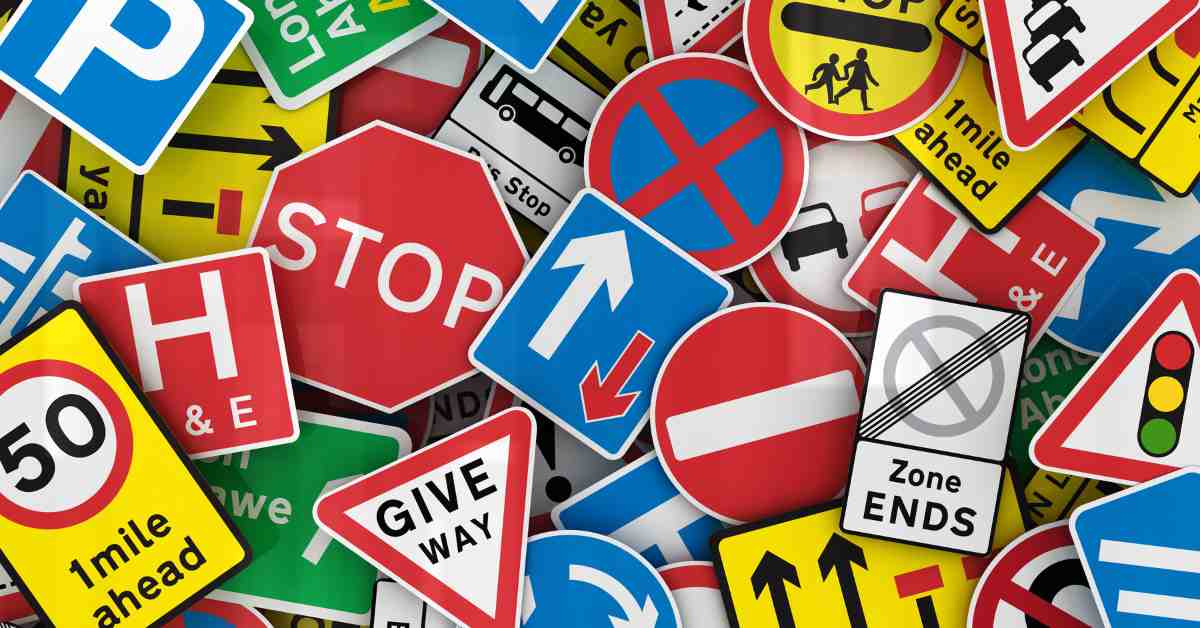Learning how to drive a car is an essential life skill that can open up a world of opportunities. Whether you’re planning a road trip or commuting to work, being able to drive is a valuable asset.
However, it can also feel overwhelming, especially for beginners. That’s why we’ve put together a comprehensive guide on how to drive a car, covering all the essential driving skills you need to know.
We will also cover the basic driving skills and traffic rules that every driver should know, such as maintaining a safe distance, signaling, and obeying traffic signals.
Whether you’re a beginner or need a refresher, our guide will give you the confidence and skills to hit the road safely and responsibly. So, let’s get started on this exciting journey of mastering the art of driving a car.
Understanding Car Controls and Vehicle Operation

Before you get behind the wheel, it is important to familiarize yourself with the various car controls and how they operate. This will help you feel more confident and comfortable while driving.
#1. Steering Wheel
The steering wheel allows you to control the direction of the car. You should always keep your hands in the ’10 o’clock’ and ‘2 o’clock’ positions on the wheel to maintain full control of the car. Turning the wheel to the left will make the car go left while turning it to the right will make the car go right.
#2. Pedals
There are three pedals in a car – the accelerator, brake, and clutch. The accelerator pedal is used to increase the speed of the car. The brake pedal is used to slow down or stop the car. The clutch pedal is used to engage or disengage the transmission while changing gears.
Also Check: Understand Car Categories In India
#3. Gear Shift
The gear shift is used to change the gears of the car, allowing you to adjust the speed and power of the engine. In a manual transmission car, you need to use the clutch pedal while shifting gears, while in an automatic transmission car, the car does it for you.
#4. Dashboard Controls
Dashboard controls give you important information about your car, such as speed, fuel level, and engine temperature. Make sure you understand each of the controls on the dashboard, so you can monitor your car’s performance and address any issues that arise.
#5. Other Controls
Other essential car controls include the handbrake, headlights, indicators, and horn. Make sure you know how to use these controls effectively to stay safe on the road.
Pro Tip: Before driving, take some time to adjust your seat, mirrors, and steering wheel to the correct positions to ensure maximum comfort and visibility while driving.
How To Drive A Car: Basic Driving Skills and Traffic Rules

Now that you’ve familiarised yourself with the car controls and vehicle operation, it’s time to learn and practice basic driving skills. Remember, practice makes everyone perfect! Here are some essential driving skills you should master:
- Starting and stopping smoothly: Gradually press the accelerator pedal to start moving and release it slowly to stop. Avoid sudden jerks, which can be uncomfortable for passengers and can even damage the engine.
- Steering: Hold the steering wheel with both hands and turn it gently to change direction. Avoid making sudden turns, as they can cause the vehicle to lose balance or skid.
- Changing gears: Use the gear shift to change gears smoothly and efficiently. Remember to press the clutch pedal fully when changing gears, and release it slowly while pressing the accelerator pedal.
- Making turns: Follow the traffic rules and use indicators to signal your turn to other drivers. Always turn smoothly and gently, maintaining a safe speed and distance from other vehicles.
- Changing lanes: Use the side view mirrors to check for any vehicles before changing lanes. Always signal your intent to other drivers and change lanes gradually, without sudden turns or movements.
Aside from these basic driving skills, you should also be aware of the traffic rules. These rules are in place to ensure road safety for everyone. Here are some traffic rules you should remember:
- Seatbelt: Always wear your seatbelt when driving or riding. Not wearing a seatbelt is not only illegal but also hazardous in case of an accident.
- Speed limits: Follow the speed limits to avoid accidents and traffic tickets. Different zones may have different speed limits, and these limits may change depending on the time of day.
- Traffic signals: Always obey traffic signals and signs, including stop signs, yield signs, and traffic lights. Remember, a red light means stop and a green light means go.
- Mobile phone: Do not use your mobile phone while driving. It is a traffic offense and can lead to accidents.
- Drinking and driving: Driving under the influence of alcohol or drugs is illegal and dangerous. Not only do you put your life at risk, but also the lives of other road users.
Also Check: Diesel vs. Petrol Cars
By practicing these driving skills and following the traffic rules, you can ensure your safety and the safety of others on the road. Remember to always be alert and focused on the road while driving.
Defensive Driving and Road Safety

Road safety is of utmost importance when driving, and defensive driving is a vital skill to master. Defensive driving means being aware of potential hazards on the road and taking measures to avoid them before they become a problem.
By anticipating hazards and planning ahead, you can significantly reduce the risk of accidents and ensure the safety of yourself and others.
Here are some key principles of defensive driving:
- Always maintain a safe following distance: Keep a distance of at least two seconds from the vehicle in front of you. This will give you enough time to react if the vehicle suddenly stops or slows down.
- Be aware of your surroundings: Constantly scan the road ahead and check your mirrors to be aware of what’s happening around you. This will help you anticipate potential hazards and react accordingly.
- Don’t assume other drivers will do what they’re supposed to: Even if you have the right of way, don’t assume that other drivers will yield to you. Always be prepared to stop or take evasive action.
- Obey traffic laws: Follow traffic signals, signs, and speed limits. These laws are in place to keep everyone on the road safe, and breaking them can have serious consequences.
- Avoid distractions: Focusing on the road is crucial when driving. Avoid distractions like using your phone, eating, or adjusting the radio while driving.
Defensive driving is especially important in challenging or hazardous driving conditions, such as bad weather, heavy traffic, or poor visibility. In these situations, it’s essential to reduce your speed and increase your following distance to give yourself more time to react to potential hazards.
Remember, defensive driving is not just about avoiding accidents; it’s about being a responsible driver and protecting the safety of yourself and others on the road.
Understanding Road Signs and Parking Techniques

When driving, it is crucial to understand road signs and their meanings in order to navigate the roads safely and efficiently. Road signs can provide essential information about speed limits, potential hazards, and directions. In this section, we will cover different types of road signs and their meanings.
Road signs
Road signs can be categorized into three types: warning signs, regulatory signs, and informative signs.
| Sign Type | Description |
|---|---|
| Warning Signs | These signs indicate potential hazards ahead, such as sharp curves, railway crossings, or pedestrian crossings. Warning signs are usually triangular in shape. |
| Regulatory Signs | These signs are used to control traffic, indicating actions that drivers must take. Examples of regulatory signs include speed limit signs, stop signs, and yield signs. Regulatory signs are usually circular or rectangular in shape. |
| Informative Signs | These signs provide useful information to drivers, such as directions to nearby towns or tourist attractions. Informative signs are usually rectangular or square in shape. |
It is crucial to pay attention to road signs and obey them at all times to ensure your safety and the safety of others on the road.
Also Check: Tips for Maintaining and Cleaning Your Headlight Mirror
Parking Techniques
When it comes to parking, there are several techniques that drivers should know to ensure efficient use of parking spaces and avoid causing inconvenience to others.
- Parallel Parking: This technique involves parking your car parallel to the curb. To parallel park, position your car parallel to the car in front of the space, back up, and then turn your steering wheel to the opposite side to slide into the space.
- Angle Parking: This technique involves parking your car at an angle to the curb. Angle parking is common in parking lots and requires drivers to pull forward into the space and then back up diagonally into the space.
- Reverse Parking: This technique involves backing your car into a parking space. Reverse parking can be useful when you need to exit a parking space onto a busy road, as it allows for better visibility and control when exiting the space.
Remember to always check for road signs indicating parking restrictions or limitations and obey them to avoid receiving a parking ticket or being towed.
Conclusion
By learning the basics of car controls and vehicle operation, practicing basic driving skills, understanding traffic rules, practicing defensive driving and road safety, and learning about road signs and parking techniques, you can confidently and safely navigate India’s roads.
Remember, driving is a privilege that comes with great responsibility. Always prioritize road safety by following traffic rules, maintaining a safe following distance, and being aware of your surroundings.
Keep honing your driving skills by taking additional driving lessons and practicing regularly. With these tips and resources, you can be a safe and skilled driver, and enjoy the journey ahead.
FAQ
How long does it take to learn how to drive?
Some people may feel comfortable behind the wheel after a few weeks of practice, while others may require several months.
Do I need a driving instructor?
While it’s not mandatory to have a driving instructor, it is highly recommended, especially for beginners. They can also help you build confidence behind the wheel and prepare you for the driving test.

